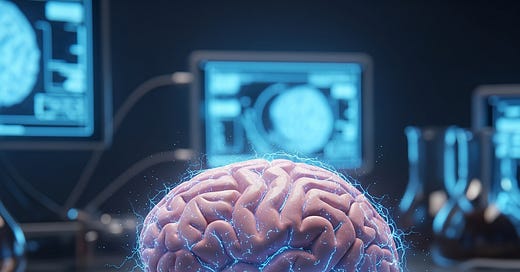Thinking in a Dish: How Mini-Brains Could Unlock the Secrets of Consciousness
Are brain organoids just lab tools — or something more?
In a lab dish, under the hum of fluorescent lights, clusters of human cells are quietly firing. These tiny, blob-like structures—no larger than a lentil—are called brain organoids, and they’re sending out electrical signals that look startlingly like the neural rhythms associated with emotions in the human brain.
It might sound like science fiction, but this is very real, very recent, and very controversial.
These “mini-brains”, grown from human stem cells, are offering researchers a remarkable window into the early development of the human brain. But now that these lab-grown models are beginning to exhibit brainwave patterns that resemble emotional states—like pain, pleasure, and fear—scientists are asking a profound question: Could these mini-brains actually feel something?
What Exactly Is a Brain Organoid?
Brain organoids are three-dimensional clusters of human brain cells, grown from pluripotent stem cells—the kind of cells that can become almost any cell type in the body. When given the right biochemical nudges, these stem cells self-organize into complex brain-like structures.
They’re not actual brains, of course. They don’t have blood vessels, spinal cords, or sensory organs. But they do develop neurons, synapses, and electrical activity that mirrors the early stages of human brain development. Some even form rudimentary regions that resemble the cortex or hippocampus.
Initially used to model developmental disorders like microcephaly or study the effects of Zika virus, these organoids have rapidly grown in complexity and utility.
Emotional Brainwaves in a Petri Dish?
Here’s where things get truly fascinating—and a bit unsettling.
In 2023, researchers at the University of California observed electrical oscillations in human brain organoids that closely matched those seen in newborn infants. Even more recently, a European team reported organoids producing activity patterns consistent with responses to environmental stressors, such as changes in temperature or exposure to neurotransmitters like dopamine and serotonin—chemicals central to human emotion.
In other words, these mini-brains are beginning to mimic the neural signatures of emotions.
To be clear, no one is claiming that a brain organoid is actually feeling sadness or joy. They lack consciousness, identity, or sensory input. But the resemblance to emotional circuitry in the human brain is enough to stir scientific curiosity—and ethical concern.
Why This Matters for Medicine
For neuroscience and medicine, brain organoids represent a revolutionary tool.
Understanding Disorders: Conditions like autism, schizophrenia, and depression are notoriously difficult to study because they involve complex and highly individualized brain activity. Organoids derived from a patient’s own cells can offer a personalized model of their brain development and help tailor treatments.
Drug Testing: Testing psychiatric or neurological drugs on organoids could help predict patient-specific responses—and avoid harmful side effects.
Neurodegenerative Disease: In Alzheimer’s research, organoids are being used to observe plaque formation and neuron death in real-time, something previously impossible in human brains.
Brain Injury and Repair: Some researchers hope to one day use organoids to replace or support damaged brain tissue, though this remains speculative for now.
The Ethics of a Thinking Blob
As these organoids become more complex, bioethicists are stepping in.
Could an organoid ever become sentient? If so, would it have rights? Should there be legal limits on how complex a brain organoid can become?
The National Institutes of Health (NIH) currently does not fund the implantation of human brain organoids into animal brains, fearing the creation of human-animal chimeras with altered consciousness. Yet some researchers are pushing those boundaries, arguing that such work could lead to breakthroughs in stroke or trauma recovery.
Already, a startup called Cortical Labs has merged brain organoids with electronics to play basic video games, like Pong—suggesting that these lab-grown brains can process information and learn from it.
If that doesn’t sound like the dawn of science fiction, what does?
Could Organoids Help Solve the Mystery of Consciousness?
The holy grail of neuroscience is understanding consciousness—the inner world of thoughts, emotions, and awareness. Some scientists now believe that brain organoids could be key to studying the neural correlates of consciousness in an ethically manageable way.
By comparing the electrical patterns in organoids with those in conscious and unconscious states (e.g., coma patients or during anesthesia), researchers hope to identify what, exactly, sparks self-awareness in the brain.
Still, others urge caution: If we don’t know what consciousness is, how can we be sure we aren’t inadvertently creating it?
The Road Ahead
As of now, brain organoids remain a tool—albeit a powerful and mysterious one. But they’ve already forced a reckoning with some of the deepest questions in science and philosophy:
What is the mind?
Where does consciousness begin?
And what responsibility do we have toward life created in a lab?
In just a few years, these "thinking blobs" have gone from basic models to emotionally responsive neural networks. The next steps—whether toward healing, human enhancement, or the birth of synthetic minds—could change not just medicine, but our understanding of what it means to be human.




